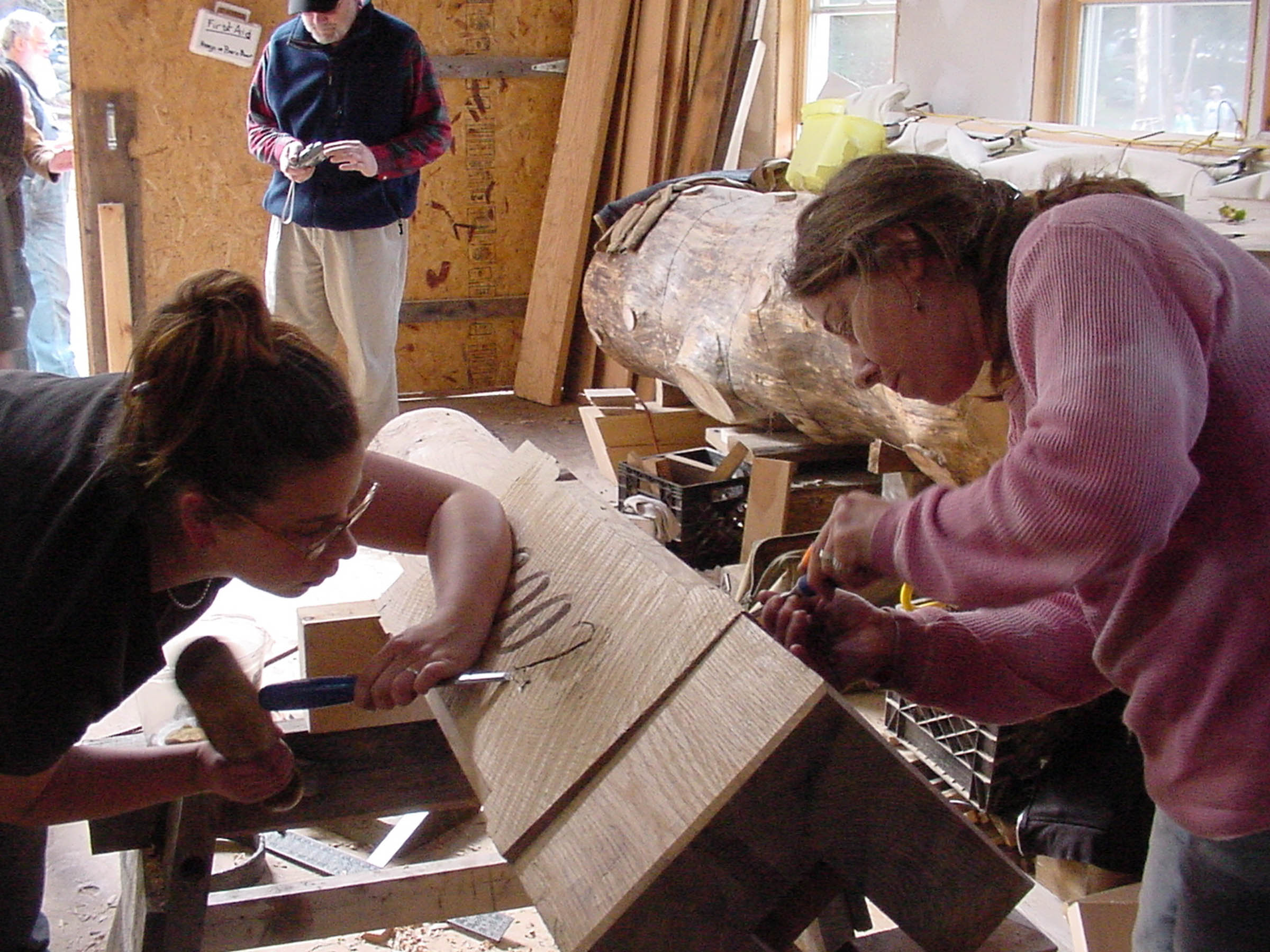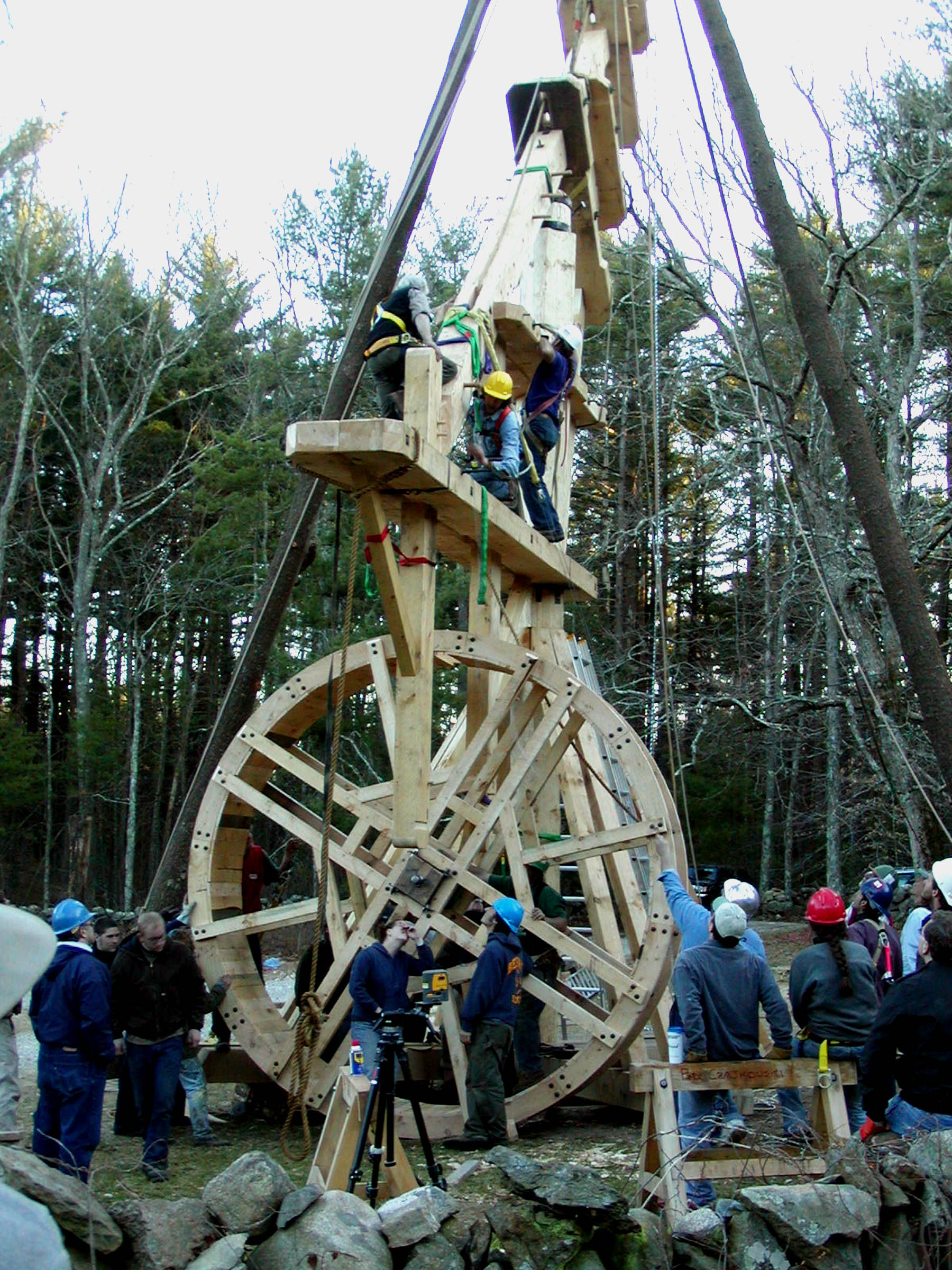Building the Perronet Human Powered Crane /
These historic replica cranes are the result of a program funded for two years by the Davis Foundation Grant through the Colleges of the Fenway to create interdisciplinary courses between Mass College of Art, Wentworth Institute of Technology and Wheelock College. Handshouse Studio directed and coordinated the making of these crane replicas, in collaboration with the Colleges of the Fenway.
Perronet Crane
The Perronet crane, designed by Jean-Rudolph Perronet in the 1750s, was created for the construction of a stone bridge over the Loire River in Orleans, France. From the Middle Ages through the 18th century, human-powered cranes were used throughout Northern Europe for unloading heavy cargo on docks and lifting materials at construction sites. These ingenious mechanical devices played an important part in the economic and social development of the cities that owned them. Cranes were often depicted in significant etchings, paintings, and manuscripts and were included in city maps and plans. It seems that their physical size and their economic importance made them symbols of pride for the trades that employed them and for the communities that benefited from their use.
Professors and students from Massachusetts College of Art, Wentworth Institute of Technology and Wheelock College of the Colleges of the Fenway chose these early cranes as topic for a collaborative project linking the different disciplines of architecture, art history, and sculpture. The three-college team was organized through Handshouse Studio by Handhouse president, Rick Brown, professor of sculpture at Massachusetts College of Art, Don Oster, associate professor of architecture at Wentworth Institute of Technology, and Marjorie Hall, associate professor of art history at Wheelock College.
The project began in the individual classrooms of Rick Brown, Don Oster, and Marjorie Hall. Each professor taught a course related to the project with the objective of guiding students to research the historical, cultural, and economic significance of historical artifacts involving the crane. The Perronet crane was then cut and assembled at Handshouse Studio in Norwell, MA during a five-day workshop in April 2002.
1750 Perronet Crane drawing
Handshouse Replica of the Perronet Crane
Each day during the workshop between forty and eighty art students, architecture students, liberal art students, professors, alumnae and master timber framers gathered to use the knowledge and skills they had learned in the classroom to build the 50-foot wooden human-powered crane with 18th century materials and technology.
The students of these three colleges worked alongside each other guided by a selection of professionals from the Timber Framers Guild, some of the most talented timber frame craftspeople, engineers and educators including co-executive director of the Guild Joel McCarty (Alstead, NH), wheelwright Jim Kricker (Saugerties, NY), and timber frame preservationist Henry Russell (Bristol, England). The project gives students an opportunity to hone their skills in architectural design, woodwork, metalwork, comprehensive research, experimental archaeology, project planning, and a wide range of organizational skills associated with orchestrating a large-scale construction project. The crane was successfully built and raised by old-world methods and human power.
The Perronet crane built at Handshouse Studio has since continued to educate the broader pubic. The crane was exhibited in New Bedford, MA in connection with the Schooner Ernestina during the summer of 2002, in Burlington, Vermont, during the Timber Framers Guild 2002 Eastern Conference. It is now standing in front of the Wentworth Institute of Technology and Massachusetts College of Art on Huntington Ave in Boston. Articles on the Perronet crane were published in the July 2003 issue of Fine Homebuilding and the April 2003 issue of National Geographic Magazine. The five-day workshop was documented and aired on the National Geographic Today television show and Real World of WGBH public television for an educational program on applications of math formulas.
HIstoric cranes depicted in paintings and etchings
The Perronet Crane project was funded by a grant from the Davis Foundation of the Colleges of the Fenway, Mass College of Art, the Colleges of the Fenway, the Norwell Education Foundation and S.H.O.R.E. from the Scituate High School. Both cranes were made possible through the broad vision of the Colleges of the Fenway who consistently supported these projects and the Davis Foundation Grant that funded the projects and the classes. The drawings, models, and research gathered by the participating students of the Perronet crane project were exhibited in the lobby of the Artist’s Residence at Mass College of Art on Huntington Ave.

















